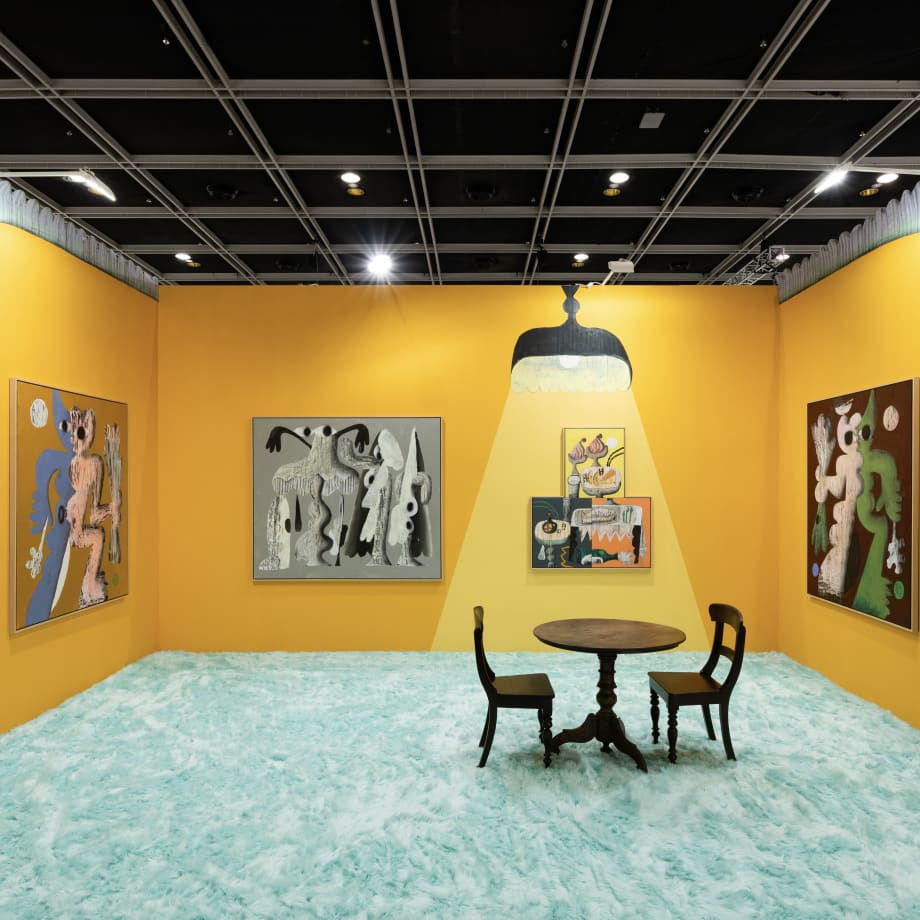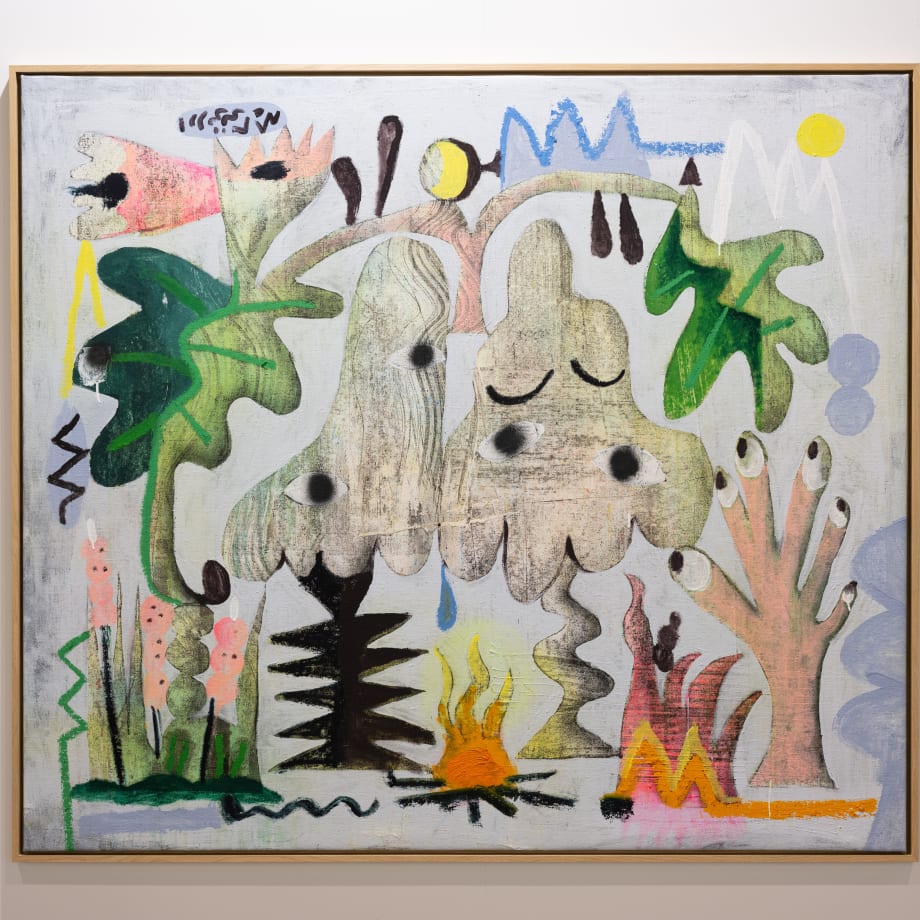Booth B13
For Art Central 2023, Double Q Gallery is delighted to present a solo booth by Hungarian artist József Csató titled Going Home, featuring a site-specific painting installation and a new body of work. The installation takes the form of an inviting room, in which arches, soft flooring and lamplight create an interior space that is in itself a meticulously designed trompe-l'œil.
Upon entering this visually deceptive pictorial space, the observer encounters references to art and cultural history: the artist alludes to the compositional principle of “a painting within a painting”, and to the theory proposed by the famous Renaissance humanist Alberti, who regarded the canvas as “an open window through which I see what I want to paint”. In Csató’s interior space, the paintings displayed on the walls likewise function as windows that open onto the outside world or the internal space. But it is not simply the foreshortened interior that deceives the eye: once the observer has stepped inside, Csató leaves them uncertain as to whether they are looking into an external or an internal space.
The totemic creatures appearing in those of Csató’s canvases that function as spatial windows (Guard I, Guard II), and his images suggestive of still lifes (After the Feast), likewise contain countless art historical references, while in terms of the scenes that he sets in arched, shrine-like spaces, and his occasionally sculptural, three-dimensional formations, there are parallels to be found with architectural and art historical references in European Christian culture. Csató’s compositions can generally be described as syntheses of art historical visual idioms that ultimately give rise to entirely idiosyncratic associations. In his unfettered visual world, characterised by humour and playfulness, simplicity of form is combined with references to both pop culture and art history.
In the pictorial space of his paintings, he is concerned with repetitively discovering and varying the potential inherent in each individual configuration. Strange, plant-like shapes, hybrid figures suggestive of anthropomorphism, motifs that resemble tubes, drops, or pots, and freely invented “signs” emerge from the surface of his brightly coloured sensory paintings. His pictorial spaces and Wunderkammer-like compositions often incorporate disorientating changes in perspective, making it harder for the observer to determine whether the scenes and motifs in the pictorial spaces have been brought into being by the artist in external or internal spaces. His compositions frequently feature totemic figures and hybrids reminiscent of primeval, prehistoric cultures and civilisations, which Csató intentionally amalgamates with European compositional schema, such as still lifes, landscapes, and even portraits.
As a result of the idiosyncratic technique employed by the artist, the pictorial spaces oscillate between sketch and painting. However, by applying multiple layers of paint and then rubbing them back using a frottage-like technique, some of the pictorial spaces open up towards an enigmatic dimension. Furthermore, the technique of rubbing means that in every pictorial space, a piece of the artist’s studio is perpetuated and visualised, when the texture of the studio wall becomes imprinted on the surface of the rubbed canvas.
- Mónika Zsikla






